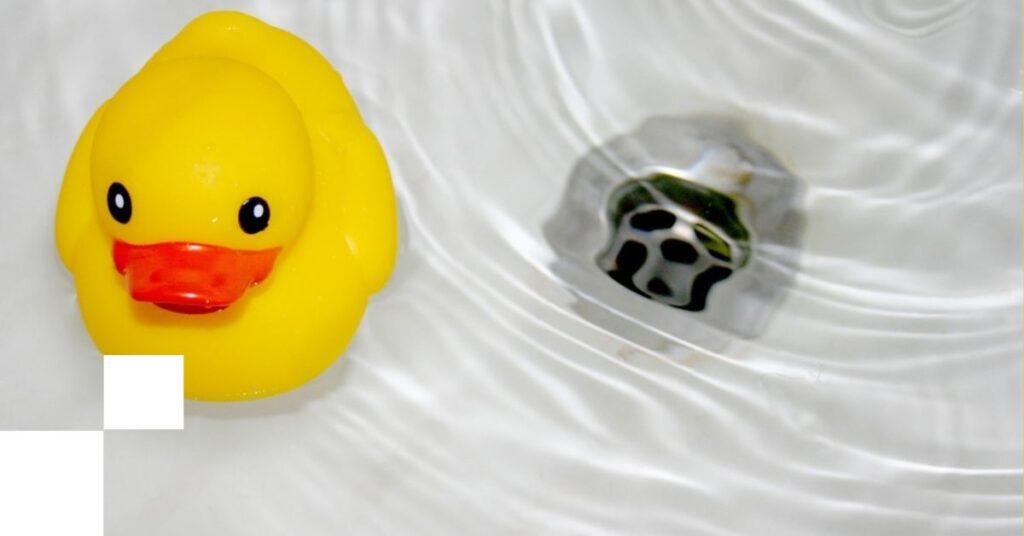When it comes to bathrooms, one of the most important components to consider is the bathtub drain size. Knowing the standard bathtub drain size is critical when it comes to installing a new bathtub, and it’s essential for ensuring that the drain functions properly.
In this blog post, we’ll be discussing all you need to know about Bathtub Drain Size, from the standard size to tips for selecting the right one for your bathroom.
Use links below for easy navigation
The Importance of Understanding Bathtub Drain Size
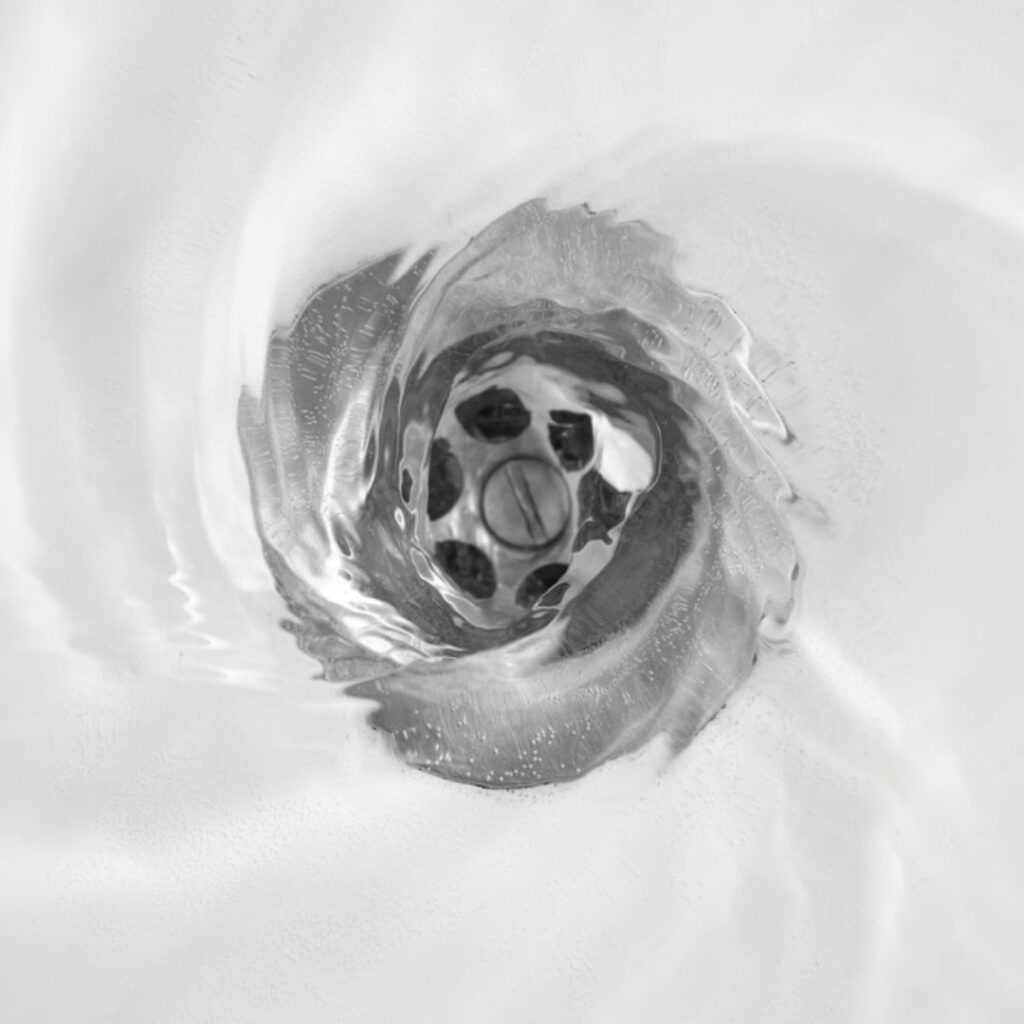
Understanding the bathtub drain size is crucial for any homeowner or contractor involved in bathroom remodeling or construction projects. The bathtub drain plays a vital role in the proper functioning of the bathtub, and its size determines its compatibility with various components, such as the overflow drain, trap, and piping system.
If the bathtub drain size is not considered correctly, it can lead to problems such as slow drainage, clogs, or even leaks. Imagine the frustration of enjoying a relaxing bath, only to find yourself standing in ankle-deep water because the drain can’t handle the flow. Avoiding such issues is why understanding the standard bathtub drain size is so important.
Additionally, understanding the bathtub drain size allows you to select the right drain components, such as stoppers or covers that are compatible with your chosen drain size. This ensures a proper fit and helps maintain the functionality and aesthetic appeal of your bathtub.
Bathtub Drain Pipe Length
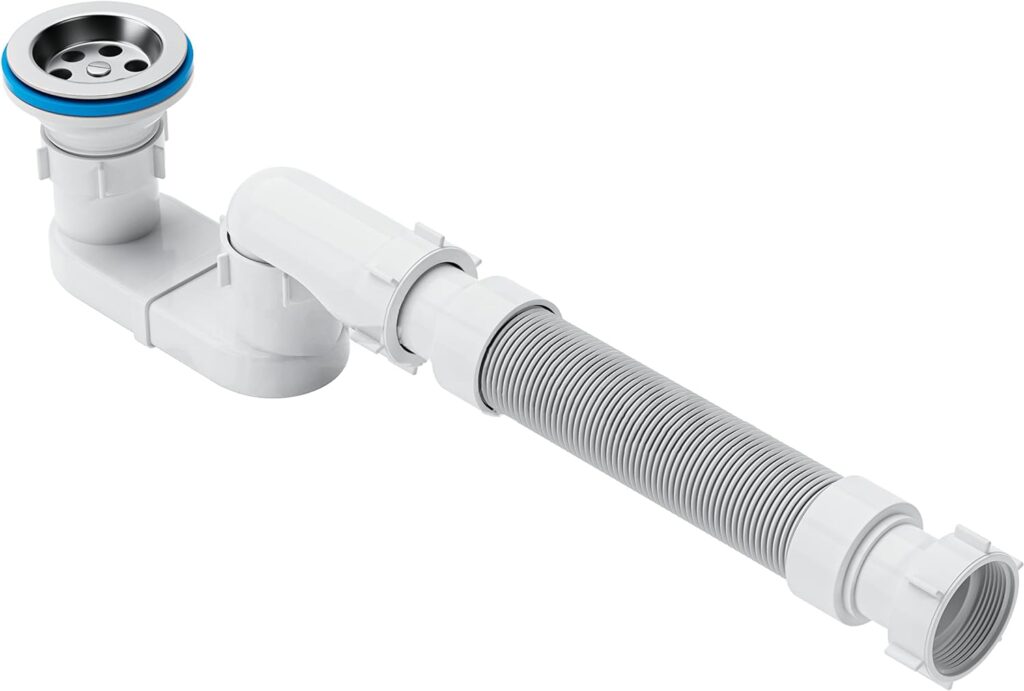
The typical bathtub drain pipe length is around 12 to 14 inches, but variations exist to accommodate different tub styles and configurations. This length allows for the installation of the essential component known as the P-trap, which plays a vital role in preventing sewer gases from entering your bathroom while still allowing water to flow smoothly.
The P-trap, shaped like a “P” or “U,” creates a water seal that blocks foul odors from wafting backup through the drain. It’s a simple yet ingenious device that maintains a hygienic and pleasant atmosphere in your bathroom.
In modern bathroom design, freestanding and clawfoot tubs have gained popularity, necessitating longer drain lengths to reach the floor drain or plumbing stack. These variations often require custom solutions to ensure proper drainage.
So, whether you have a classic built-in tub or a trendy freestanding beauty, understanding the importance of bathtub drain length and the trusty P-trap will ensure your bathing experience is both comfortable and odor-free. It’s plumbing that works behind the scenes to keep your bathroom serene.
Related: Most comfortable freestanding tubs
Standard Bathtub Drain Size Measurements
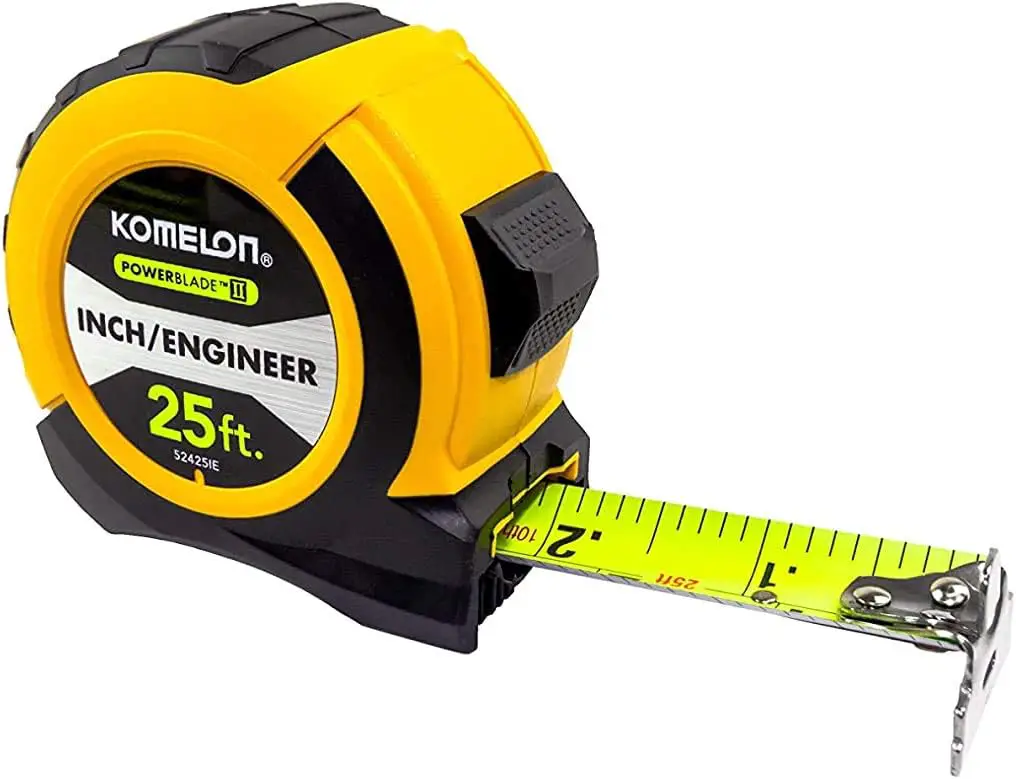
When it comes to bathtub drain size, it’s essential to know the standard measurements. The standard bathtub drain size is typically 1.5 inches in diameter. However, it’s important to note that this size can vary depending on the type of tub and the specific requirements of your bathroom.
To determine the correct drain size for your bathtub, you may need to consider factors such as the volume of water the drain needs to handle, the type of plumbing system you have, and any additional components like an overflow drain or trap. It’s also worth mentioning that some modern bathtub designs may have larger drain sizes to accommodate high-flow or spa-like features.
Related: Best Small Bathtubs
Standard Shower Drain Size
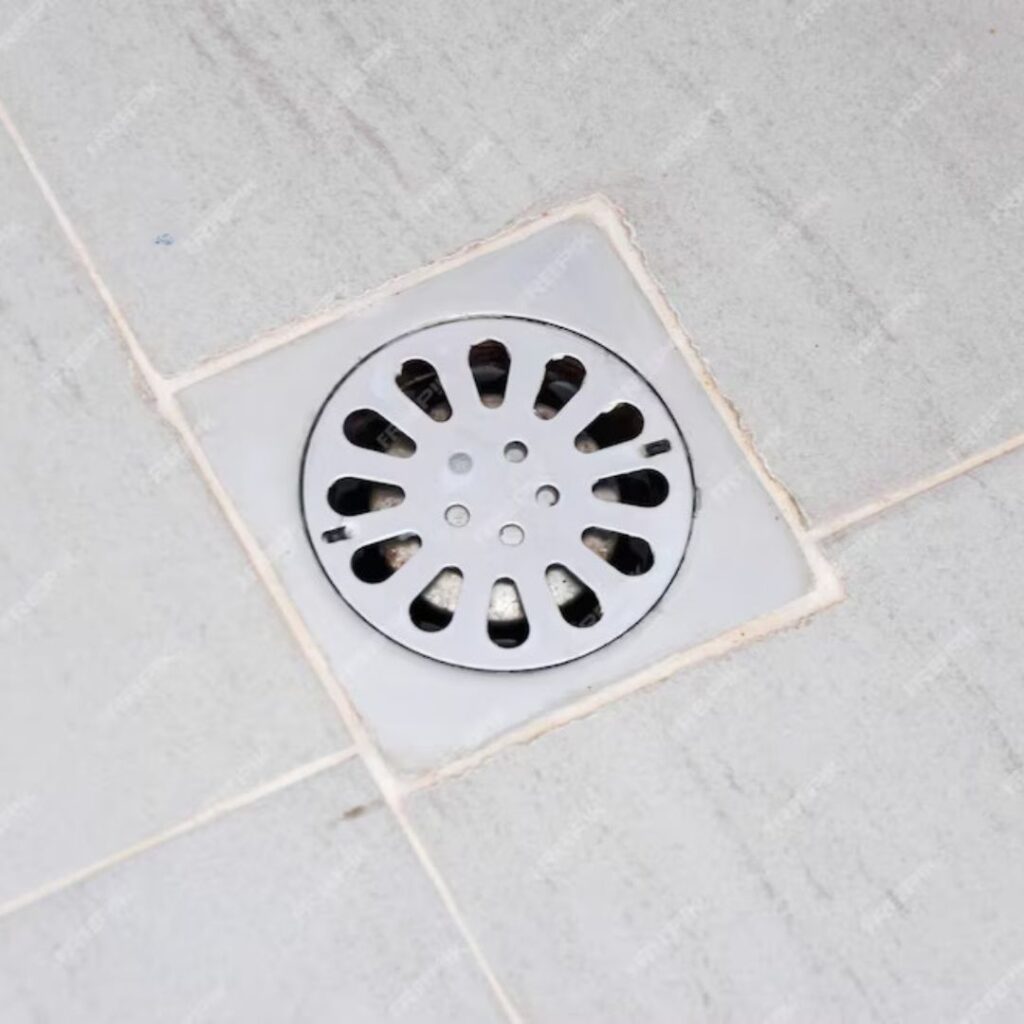
Traditionally, the standard shower drain size hovers around 2 inches in diameter. This dimension is a plumbing classic, designed to efficiently whisk away water without any fuss. But what if you crave a more extravagant shower experience?
Enter the 3-inch drain. Often overlooked, this larger option boasts the capacity to handle increased water flow, giving you a spa-like sensation. It’s the choice for those who demand luxury.
Yet, don’t underestimate the aesthetics. Drain size can also influence your shower’s design. A standard 2-inch drain might limit your tile choices, but it’s usually more than enough for both function and style. On the flip side, a 3-inch drain opens doors to creativity, allowing larger tiles and intricate patterns.
In summary, while the standard shower drain size typically rests at 2 inches, the world of shower design offers options for those who dare to dream bigger or seek a touch of modern elegance. The choice is yours, balancing both form and function for your ideal shower experience.
Standard Bathroom Sink Drain Size
In the realm of bathrooms, the standard bathroom sink drain size typically measures 1.25 to 1.5 inches in diameter. This size ensures efficient water drainage while preventing clogs. It’s a balance between form and function, ideal for most bathroom setups. However, for those seeking extravagance, a larger drain size can accommodate higher water flow.
Standard Kitchen Sink Drain Size
In the heart of the home, the kitchen, the standard kitchen sink drain size is a bit heftier, typically ranging from 1.5 to 2 inches. Given the kitchen’s multi-functional nature, this size can handle not only water but also food debris. It’s essential for preventing blockages and maintaining smooth operation in this high-traffic area.
While these standard sizes do their jobs efficiently, they’re not set in stone. Innovative designs and modern trends have given rise to unique sink configurations, including linear and trough drains, providing both functionality and aesthetic appeal.
Factors Affecting Bathtub Drain Size
When it comes to bathtub drain size, there are several factors that can affect the size you’ll need for your specific bathroom. One of the primary factors is the type of bathtub you have or plan to install. Different types of bathtubs may have varying drain size requirements based on their design and water capacity. For example, larger freestanding or soaking tubs may require a larger drain size to accommodate the increased volume of water.
Another factor to consider is the plumbing system in your home. The drain size should be compatible with the existing plumbing system to ensure proper water flow and drainage. If you have an older home with outdated plumbing, it’s important to take this into account when selecting the drain size.
Lastly, consider your personal preferences and needs. If you enjoy taking baths that require a higher water level or if you have specific spa-like features in your bathtub, you may need a larger drain size to handle the increased water flow.
By considering these factors, you can determine the appropriate bathtub drain size that will ensure efficient water drainage and prevent any potential issues with your bathtub.
How to Determine Your Bathtub Drain Size
Determining the size of your bathtub drain is essential to ensure proper functionality and avoid any potential issues. Here’s a step-by-step guide on how to determine your bathtub drain size.
Measure the diameter
Start by measuring the diameter of your bathtub drain. You can do this by removing the drain cover and using a measuring tape or ruler to measure the width across the opening. Take note of the measurement in inches.
Related: How to measure a bathtub
Consider the type of tub
The type of bathtub you have or plan to install can also affect the drain size. For example, larger freestanding tubs or soaking tubs may require a larger drain size to accommodate the increased water volume.
Related: Best 2 Person Jacuzzi Bathtub
Consult a professional
If you’re unsure about how to determine your bathtub drain size or if you’re considering a major bathroom renovation, it’s always best to consult a professional plumber. They can assess your specific needs and provide expert guidance on the appropriate drain size for your bathtub.
By following these steps and seeking professional advice if needed, you can determine the correct bathtub drain size for your specific bathroom. This will ensure efficient water drainage and prevent any potential issues with your bathtub in the long run.
Upgrading or Replacing Your Bathtub Drain
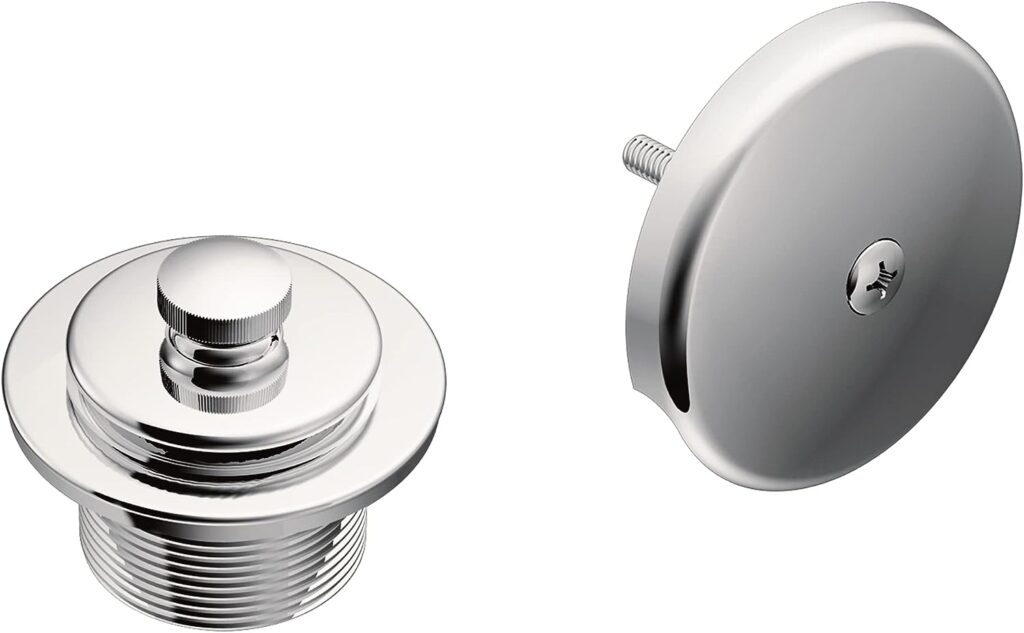
If you’re looking to upgrade or replace your bathtub drain, you’ve come to the right section. Upgrading or replacing your bathtub drain can improve the functionality and aesthetics of your bathroom. Whether you’re tired of dealing with a slow-draining bathtub or simply want to give your bathroom a fresh look, upgrading or replacing your bathtub drain can make a big difference.
There are several options available when it comes to upgrading or replacing your bathtub drain. One option is to choose a new drain that offers improved features, such as a built-in stopper or a pop-up drain. These features can enhance the convenience and ease of use of your bathtub.
Another option is to consider the material of your bathtub drain. Upgrading to a higher-quality material, such as brass or stainless steel, can increase the durability and longevity of your drain. It can also add a touch of elegance to your bathroom.
It’s a small change that can make a big impact on the functionality and appearance of your bathroom.
Common Issues with Bathtub Drains and How to Fix Them
Bathtub drains can encounter a variety of common issues that can disrupt your bathing experience. One of the most common issues is a clogged drain. Over time, hair, soap scum, and other debris can accumulate and cause a blockage in the drain. This can lead to slow drainage or even a complete backup, resulting in standing water in your bathtub. To fix this issue, you can use a plunger or a drain snake to remove the blockage. For stubborn clogs, a chemical drain cleaner may be necessary, but be cautious as these can be harsh on your pipes.
Another common issue is a leaky bathtub drain. Leaks can occur due to worn-out gaskets or loose connections. This can cause water to seep into your bathroom floor or walls, leading to water damage and mold growth. To fix a leaky drain, you will need to tighten the connections or replace any damaged gaskets. It’s important to address leaks promptly to prevent further damage to your bathroom.
Additionally, you may encounter issues with a bathtub drain that won’t stay closed. This can be frustrating when you want to fill your bathtub with water for a relaxing soak. To fix this issue, you can try adjusting the stopper or replacing it with a new one that fits properly.
Remember, addressing these issues promptly can prevent further damage and help you maintain a fully functional and enjoyable bathing experience.
Conclusion
In conclusion, understanding the significance of bathtub drain size is paramount when it comes to ensuring a functional and efficient bathroom. Choosing the right drain size involves considering factors such as the bathtub style and size, plumbing regulations, and water pressure. Proper measurement, replacement, or installation of a bathtub drain can significantly impact water flow and drainage efficiency.
Moreover, the choice of drain size should harmonize with your bathroom’s design and décor, enhancing the overall aesthetic appeal. While cost considerations come into play, the investment in the right drain size pays off in terms of long-term performance and satisfaction.
Additionally, homeowners have the opportunity to upgrade to more efficient and eco-friendly drain options, which not only improve functionality but also contribute to a greener home. It’s crucial to remain proactive in preventing clogs through regular cleaning, maintenance, and the use of drain strainers.
In essence, making informed decisions about your bathtub drain size is essential for a hassle-free and enjoyable bathing experience. So, whether you’re planning a replacement, upgrade, or a new installation, this comprehensive guide equips you with the knowledge to ensure your bathtub drain is the perfect fit for your needs and preferences.
FAQs
Here are the answers to the top five frequently asked questions about bathtub drain sizes
What is the significance of the drain size in a bathtub?
The drain size in a bathtub is crucial for efficient water drainage. It determines how quickly water can exit the tub, affecting your bathing experience. Choosing the right size ensures that water drains swiftly, preventing overflow and standing water.
How do I measure my bathtub drain for replacement or installation?
To measure your bathtub drain, you’ll need a few basic tools like a tape measure or calipers. First, remove the drain cover and measure the diameter of the existing drain. Be sure to measure across the widest point. This measurement will help you determine the correct size for replacement or installation.
What factors should I consider when choosing the right drain size for my bathtub?
Several factors come into play when selecting the right drain size, including the size and style of your bathtub, plumbing regulations in your area, and water pressure and flow rate. Ensuring compatibility with these factors is essential for optimal performance.
Can I install a bathtub drain myself, or should I hire a professional plumber?
Whether you can install a bathtub drain yourself or should hire a plumber depends on your DIY skills and comfort level with plumbing tasks. Simple replacements may be DIY-friendly, but complex installations or major changes are best left to experienced plumbers to avoid potential issues.
How can I prevent clogs in my bathtub drain?
Preventing clogs in your bathtub drain involves regular maintenance and precautions. You can start by using drain strainers to catch hair and debris. Periodic cleaning with a drain snake or appropriate cleaner can also help keep your drain free of clogs. Additionally, being mindful of what goes down the drain, such as avoiding pouring grease or large food particles, can go a long way in preventing clogs.

